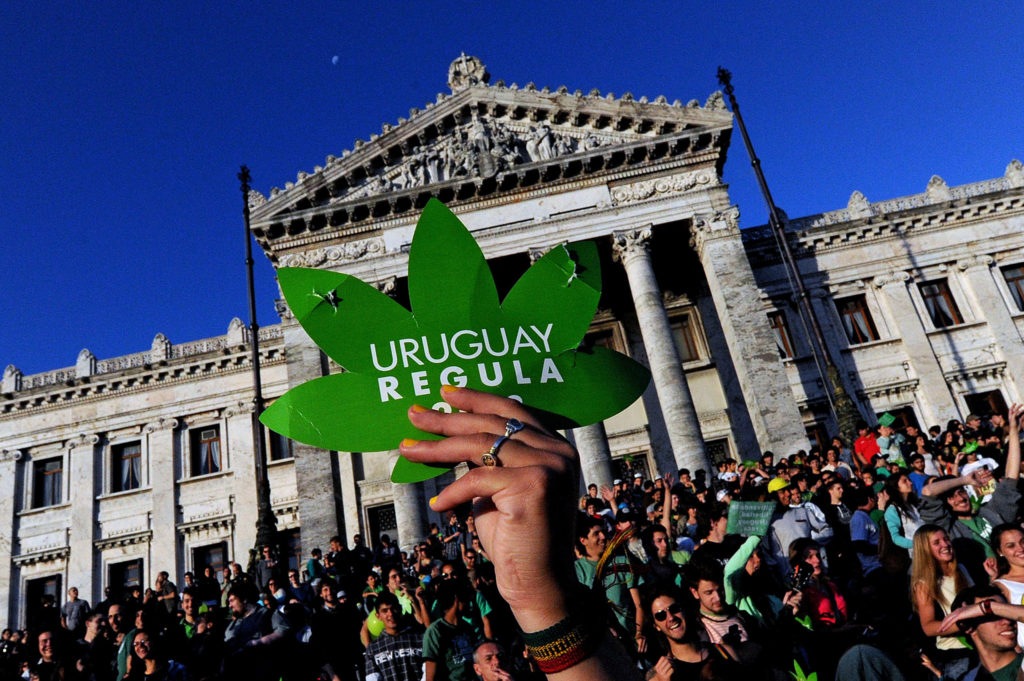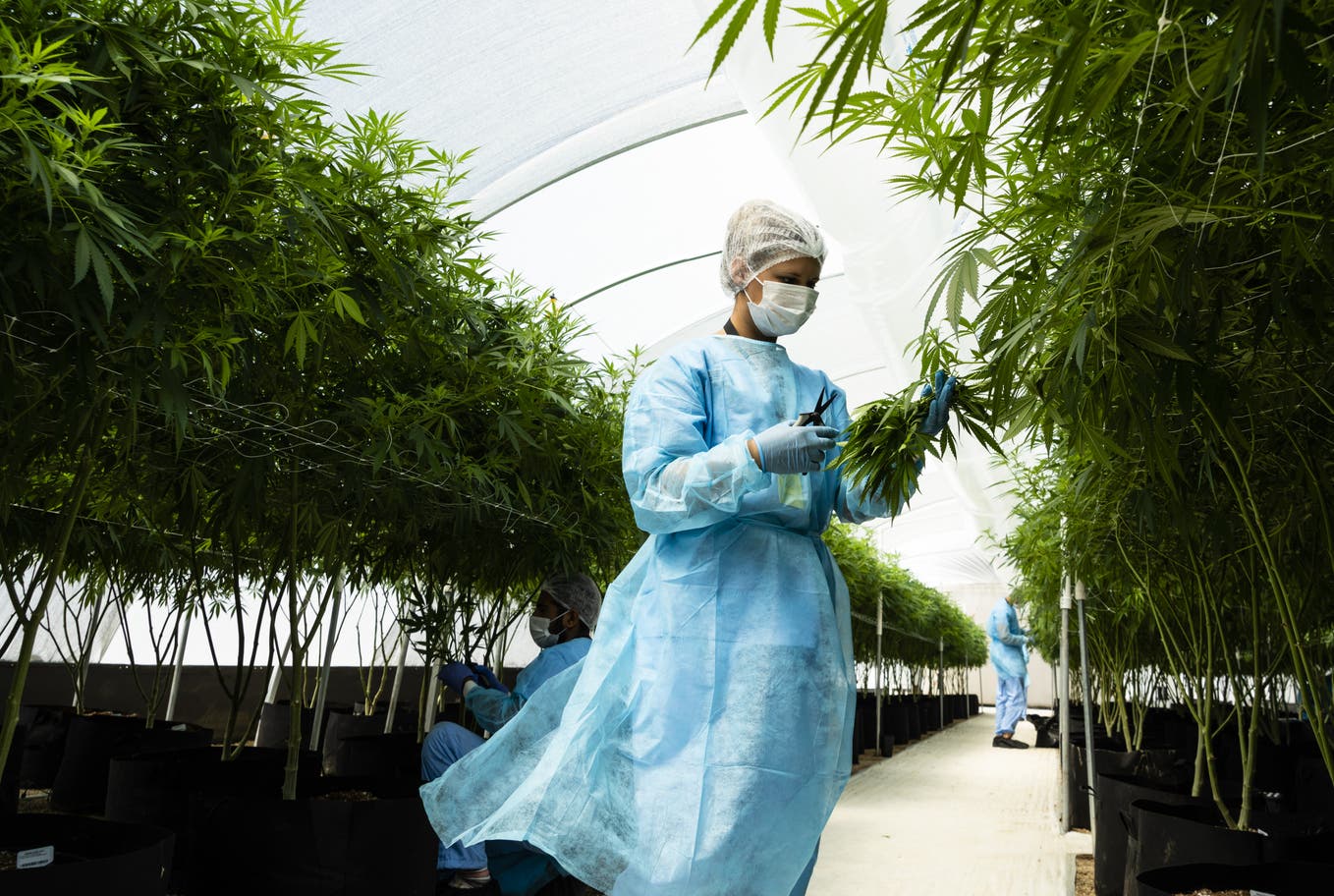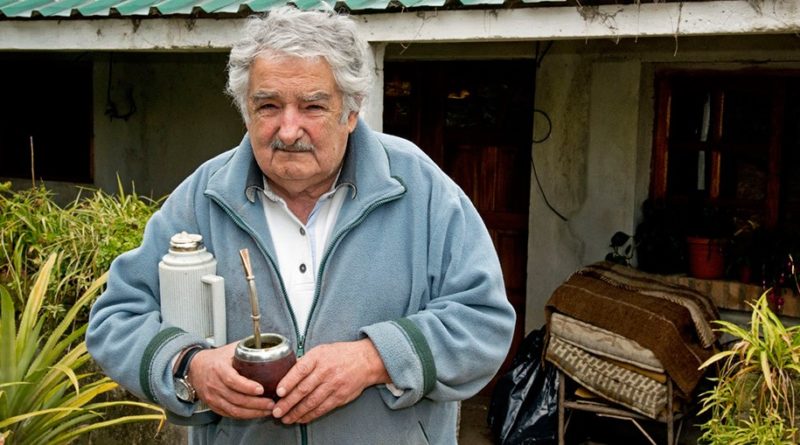RIO DE JANEIRO, BRAZIL – The Antártida Pharmacy in downtown Montevideo is not specifically labeled. Only when approaching the cash register does it become apparent that the pharmacy sells more than just medicines and hygiene products.

There are hemp pipes and hemp grinders in the showcase, and in a small rack on the counter there is rolling paper for joints in different sizes. Felipe Peña says he buys around 30 grams of marijuana a month. And emphasizes: “mostly at the Antártida Pharmacy”.
The weed is of good quality and the selection is wide. He smiles. The 29-year-old father owes his pot-smoking luck to the state: because in Uruguay, a small country north of Argentina with a population of 3.4 million, they produce and sell cannabis with a seal of approval.
Smoking for “recreational” purposes
In December 2013, Uruguay became the first country in the world to fully legalize cannabis for “recreational purposes”. The aim was to remove the drug business from the hands of the mafia. The left-wing president José Mujica was confident that the consequences of a ban would be worse than the consumption itself.
He presented the decriminalization as a reaction to a reality that cost human lives and enriched organized crime. Uruguay pioneered this approach in a region where drug ban has led to rampant violence and is thus being increasingly questioned.
Smoking pot on the street is now normal in Uruguay. Anyone strolling through the capital Montevideo in the pre-Corona era used to be enveloped in a cloud of marijuana or offered cannabis brownies. Even a taxi driver, after a debate on regulation, gave away some of her cultivated weed as a farewell gift.
Legalization has gained public support, explains Sebastián Aguiar from the research center Monitor Cannabis of the University of La República. According to the last public opinion poll in late 2017, the population realized that despite persistent problems, there is nothing to be said against legalization.
After the law was passed, Mujica called it an experiment that would be conducted under strict rules. The legalization was implemented in stages. First, the cannabis clubs and the freedom to grow at home were introduced. From mid-2017, licensed pharmacies finally began to sell marijuana.
Felipe Peña was curious about this. He admits that it also made it easier for him to buy weed. Before that, he found it illegally – mostly through friends, sometimes also from dealers. As soon as cannabis began to be sold in pharmacies, he officially signed up as a smoker at a post office – with an identity card, digital fingerprint and confirmation of residence. Uruguay insists on the latter in order to prevent cannabis tourism, which the Netherlands, for instance, is struggling with.

Greater demand than supply
In a pharmacy, Peña is allowed to buy 40 grams of marijuana per month. He is identified through his fingerprint. A gram of marijuana costs the equivalent of about 1.20 Swiss francs (R$6,00), and the content of the THC psychoactive substance is no more than nine percent. The pharmacies determine on which days of the week and at what time they sell weed.
Smokers reserve the desired goods online. But according to Peña, this does not ensure purchase. He says that last week he stood in line for two hours outside a pharmacy – in vain. According to an employee, cannabis supply has been scarcer. “I and 40 others went home empty-handed.”
Apparently this is not uncommon. “The demand for weed from pharmacies is greater than the supply,” clarifies Sebastián Aguiar of the Cannabis Monitor. Only two companies currently grow marijuana for the state, each of them being allowed to produce a maximum of two tons per year.
Aguiar does the math: The four tons would never be enough to supply the 41,000 Uruguayans who have registered to buy cannabis in pharmacies and are entitled to 480 grams of it per year. However, a study by the Regulatory and Control Commission for Cannabis (IRCCA) also shows that between January 2019 and February 2020 the average amount of marijuana purchased per person per month was 15 grams, well below the maximum of 40 grams.
In a report published in December by the National Monitoring Centre for Drugs, it is stated that in 2018 one-third of smokers in the country obtained their weed legally. In order to increase this proportion, the state last fall granted three more companies a license to grow marijuana for “recreational purposes” on its behalf. It was forced to act, because the lack of supply is driving smokers back into illegality.
When the pharmacy ran out of supplies last week, the discussion about where to get cannabis began in the waiting line, says Peña. “The last option is always ‘Boca’,” says the 29-year-old with a shoulder shrug. That’s the name of the illegal sales outlet of drug dealers in poor districts. They offer Prensado – pressed marijuana – from Paraguay. It was the only weed that Uruguayan smokers used on a large scale before legalization.
“It’s lousy quality,” Peña says. Full of twigs, seeds, and leaves. It’s also cheaper than legal weed, the price of which is relatively low by international standards. According to sociologist Aguiar, the Prensado is more harmful to health than the pure cannabis flowers from Uruguayan plantations. The product from Paraguay is often a mixture that contains toxic substances. Those who can afford it, therefore, resort to the illegal local market, which has flourished since the regulation, in case of supply bottlenecks in pharmacies.
Aguiar points to an additional obstacle: Only a dozen or so pharmacies sell legalized marijuana throughout Uruguay. Most of them are located in Montevideo. Those who do not have a licensed pharmacy in their vicinity are thus forced to rely on the black market for practical reasons.

Clubs and private cannabis growers
Uruguayan smokers have to choose between three options to consume marijuana legally: like Peña, they can buy from the pharmacist, grow marijuana themselves, or join a club that grows it collectively. In any case, official registration is required.
The 157 cannabis clubs in the country have over 4,800 members. More than 8,400 private individuals officially grow cannabis themselves. A whole branch of business has developed from this: in Montevideo, there’s a plant shop on every corner. The shops offer everything the cannabis growers need: special soil, fertilizer, heat lamps, or specialized books. Even one’s own marijuana flowers can be pressed in some of the shops.
Because the pharmacies cannot supply their clientele in sufficient quantities, there is a great incentive for clubs and private growers to branch off and sell some of their weed. This has created a second black market with weed from Uruguay, which now exists parallel to the traditional black market with weed from Paraguay. Aguiar calls it the grey market because legally grown weed is sold illegally. In his opinion, such issues arose because the law was not fully implemented.
However, the interim balance is essentially positive, a good six years after legalization: organized crime has lost turnover, and there have been no attacks on pharmacies, cannabis clubs or the two large cannabis plantations. Young smokers consume fewer other drugs because contact with traditional dealers has been reduced.
However, Aguiar also points out that the number of users has increased somewhat, when compared to previous years. In his opinion, this is not worrying: this increase is explained by senior citizens, women, and Uruguayans from the interior of the country who have been using more marijuana since legalization.
Few controls
Another consumer is Santiago Nieto. He was already smoking pot before it was legalized. The weed came from the cannabis plants in his garden. He claims he never sought dealers. He says he never liked the taste of Prensado from Paraguay. As soon as the regulation came through, he registered as a hobby cannabis grower with the authorities. “To avoid problems,” as the 30-year-old puts it.
Nieto is allowed by law to have six flowering perennials at the same time and to harvest a maximum of 480 grams of cannabis flowers per year. The tall Uruguayan claims that he complies with the regulations. And he admits: “But there is hardly any control.” He doesn’t know anybody who has ever been approached by the authorities.
Nieto sees it as positive that cannabis is better accepted in society through legalization, that its medical purposes are recognized and that there is greater information about it. But he also says, “I would never light a joint in front of children.” He is aware that smoking weed is harmful to health and should not be trivialized.
During the interview, Felipe Peña also concedes that moderate marijuana consumption is important to him. It is like with alcohol, food, or tobacco, one must also find the right balance in cannabis consumption. Although he does not advertise it, when asked, he admits that he also has some plants at home. He is not registered as a grower, because officially he is already a marijuana buyer in the pharmacy – according to the law, both are not possible.

